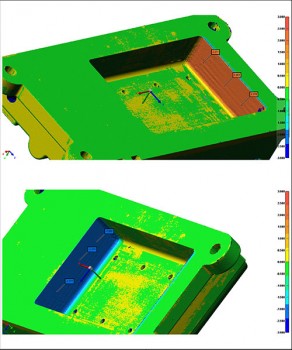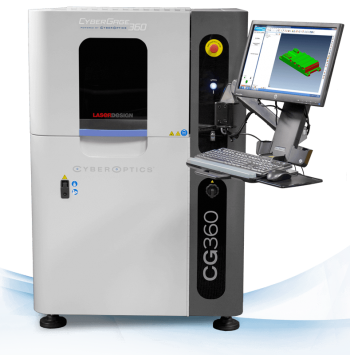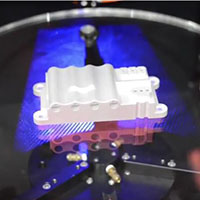An Inspector Call
Taking a look at the importance of part scanning and inspection within the overall production schedule.
MAIN AIM: Greg Hetzler, Laser Design, says that minimizing production costs and decreasing manufacturing time is the common industrial goal.
Why is efficient industrial part inspection so crucial to manufacturers?
Be it for aerospace, automotive, consumer electronics or medical devices – there’s a shared aim to minimize overall production costs and decrease manufacturing times to ensure time-to-market goals are achieved.
For companies to achieve overall reductions in cost and time, as well as ship products more quickly, it’s about looking beyond the manufacturing stage and across the end-to-end workflow – from design through to delivery. Quality assurance, and within that, industrial parts inspection, is an essential aspect of this.
Whether for in-process quality assurance, incoming and outgoing parts inspection on the manufacturing floor or in the metrology lab or engineering environment, the need for increased speed from the development cycle to improve time-to-market is a key goal among manufacturers. Efficient part inspection helps to meet this objective.
There has been an increase towards 3D scanning and measurement in part inspection. This must make things easier for manufacturers?

That’s right, this is a move that is increasingly commonplace, yet the attributes and performance capabilities of the various options available for this application vary significantly.
The win-win comes from any system that not only fulfils the actual functional requirement demanded of it, but also delivers the essential information accurately, incredibly quickly and via an extremely user-friendly process. Not every situation achieves the latter aspects, which can affect the ability to provide the all-important reduction in time and costs.
For example, although widely-used, traditional coordinate measuring machine (CMM)-type systems, while very accurate, are historically slow and difficult to programme.
So it’s about finding speed and simplicity without compromising accuracy?
Exactly – and the good news is that recent technology advancements in 3D scanning and inspection have made it possible to overcome the challenge of achieving speed, simplicity and accuracy simultaneously.
If you’re a manufacturer, it’s worth doing your homework and researching the latest systems.
How does your own technology address the needs that you’ve outlined?

When it comes to the scanning/inspection requirements of our customers, we’re tackling some of the most difficult 3D shape manufacturing applications in the world. To stay abreast of these needs, we recently introduced the CyberGage360, which we believe sets itself apart from anything on the market in terms of high accuracy scanning and measurement of complex parts.
Our latest generation CyberGage360 is an ultra-fast metrology-grade, one-button, automated 3D scanning and inspection system, which is quite literally as easy to use as a microwave oven. With no need for complicated programming, it’s no exaggeration to say that anyone could be trained within one hour.
A microwave for quality assurance – that sounds interesting, how does it work?
The CyberGage 360 conducts a highly precise 360 degree 3D scan of complex parts, accurate to seven microns*, while automatically generating a full 3D inspection report in three to five minutes. During the process, the system collects 10 to 20 million data points (XYZ coordinates) – a genuinely simple operation to achieve an extremely complex inspection.
How exactly is it able to save so much time compared to alternative solutions like CMM systems?

One fundamental reason is its fixtureless design. There’s no need to mechanically affix the part or for the user to turn it over during scanning to capture both top and bottom geometry; the CyberGage360 captures from top to bottom in one pass. The system rotates the part to scan from various orientations, collecting all data in a mechanically precise manner into a single coordinate system.
So, why is this time-saving so important to manufacturers?
The ability to access essential data in just a few minutes enables any necessary design changes to be applied much more quickly. This in turn supports the drive to get products to market faster.
When it comes down to it, reducing or eliminating unnecessary time and cost across the design and production process is surely a key focus for any manufacturer. Certainly, from speaking to our own customers, a common and primary quality assurance goal in meeting their objectives is to maintain a close eye on parts to ensure quality criteria is met. By doing this, material costs are minimised as wastage is reduced. Meanwhile, production time is upheld which means things are manufactured to schedule and time-to-market goals are achieved.
*0.007mm+ L/10000
 Back
Back
 Back to News
Back to News





